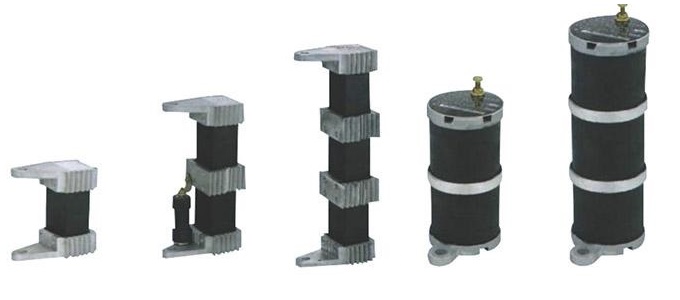


A primary harmonic eliminator is a nonlinear resistor installed between the neutral point of the Y0 junction of the primary winding of a 6-35kV electromagnetic voltage transformer (referred to as a transformer) and the ground, which plays a damping and current limiting role.
If the neutral point of the grid where the 6-35kV power station, substation, and switchgear are located is not grounded, the electromagnetic transformer primary winding connected to the Y0 line on the busbar becomes the only metal channel for the ungrounded grid to ground. Therefore, the charging and discharging path of the grid's relative capacitance to ground must pass through the transformer primary winding. This slow change process causes the transformer core to be deeply saturated. Therefore, when the grid grounding disappears, a surge of several amperes will appear in the transformer primary winding, melting the 0.5A high-voltage fuse of the transformer. Choosing a resistance value containing a resistor can effectively suppress the ferromagnetic resonance caused by the saturation of the transformer core.
A primary harmonic eliminator is installed between the neutral point of the transformer and the ground, i.e. in the zero sequence circuit of the transformer. It does not affect the measurement of line voltage and electrical energy between the secondary phases of the transformer, but only has a slight impact on the measurement of phase to ground voltage in the zero sequence circuit of the transformer. The phase voltage is observed as insulation to ground, and this slight impact is generally acceptable.
The primary harmonic eliminator is equipped with a porcelain sleeve, and the linear resistor is mainly made of silicon carbide and fired in a high-temperature hydrogen furnace. The resistors are connected by copper or die cast aluminum, which has the advantages of small volume, large capacity, and high mechanical strength.
There are two related issues that need to be addressed regarding voltage variation in the 6-35kV neutral point non effectively grounded power grid:
1. The overvoltage generated by the ferromagnetic resonance of voltage variation often causes breakdown of the internal insulation and discharge of the external insulation of the equipment, and often leads to large-scale power outages due to untimely accident handling or accident expansion;
2. The arc grounding in the power grid causes frequent burnout of the voltage transformer. The use of harmonic eliminators can effectively solve the above problems: eliminating or damping the ferromagnetic resonance overvoltage caused by nonlinear excitation characteristics of voltage variation, which can lead to system phase electrical instability; Can effectively suppress the overcurrent flowing through the transformer winding during intermittent arc grounding, and prevent the burning of the transformer; Limiting the surge current generated in the primary winding circuit of the transformer when the single-phase grounding of the system disappears, which can damage the transformer or cause the transformer fuse to melt; When a single-phase grounding occurs in the system, it can protect the transformer from damage for a long time.